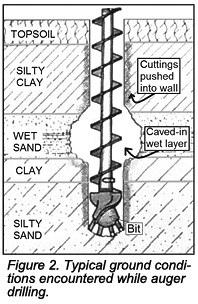Small Mining Operations
Bering Sea Gold—Part II
May 2012 by Jim Halloran
In last month’s issue we covered the initial discovery of gold, the subsequent gold rush that occurred around Nome, some of the geology of the area and past production. We’ll conclude the article in this issue with a further examination of the geology and deposit types, discuss the resources...
Using Structural Clues to Locate Buried Placer Channels
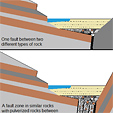 They must have assumed the paystreak was spotty and had been mined out, so they never mined as close to the side of the valley as they should have.
They must have assumed the paystreak was spotty and had been mined out, so they never mined as close to the side of the valley as they should have.
A Few Methods for Sampling Hardrock Deposits
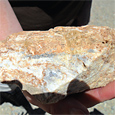 With a little homework and a methodical approach to sampling, a prospector can determine if a deposit is worthy of more of an investment...
With a little homework and a methodical approach to sampling, a prospector can determine if a deposit is worthy of more of an investment...
High Sulfidation Epithermal Deposits
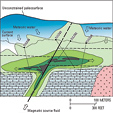 They tend to be big, coming in large to extremely large sizes. They can also be amazingly rich and produce huge amounts of very high-grade ore.
They tend to be big, coming in large to extremely large sizes. They can also be amazingly rich and produce huge amounts of very high-grade ore.
The Dredge Report
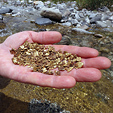 As a plaintiff in one of the lawsuits, I’m not allowed to talk about specifics in the court-ordered negotiations currently underway in San Bernardino. However, I do want to let you know we are making progress…
As a plaintiff in one of the lawsuits, I’m not allowed to talk about specifics in the court-ordered negotiations currently underway in San Bernardino. However, I do want to let you know we are making progress…
PLP Update: How to Restore The Rights of Suction Dredge Miners
 A two-pronged approach is necessary to restore suction dredging; federal preemption needs to be established as addressed above via petition; and clarification from the EPA is needed to establish that no Section 402 permit is necessary when there is no “addition” of a pollutant.
A two-pronged approach is necessary to restore suction dredging; federal preemption needs to be established as addressed above via petition; and clarification from the EPA is needed to establish that no Section 402 permit is necessary when there is no “addition” of a pollutant.
Good Assays and Bad
The high prices for gold and silver are exciting and certainly have revolutionized the prospecting and mining scene. New interest in gold and silver mining is springing up from every corner, from individual prospectors armed with gold pans to exploration and mining companies working to set up multimillion dollar commercial operations producing hundreds of thousands of ounces per year. The idea of getting riches from rocks is one that motivates a lot of folks all over the globe. It’s an exciting time, but this excitement brings out another side...
Subscription Required:
The Bawl Mill
• Ask the Experts: gold per ton; improving assay method
• Tucson Show Marketing
• Ganes Creek Hits 10 Years—Part I
• Fabulous Florence—The Golden Town of Idaho
• Arizona's Vulture Gold Mine and Lost Dutchman
• Critical Metals: Copper
• Replacing Your 12-Volt Pump
• Melman on Gold & Silver
• Mining Stock Quotes and Mineral & Metal Prices
Free:
Legislative and Regulatory Update
• Ask the Experts: Ionizing mercury
• El Tigre—Unlocking Values in Tailings to Jumpstart a Mine

